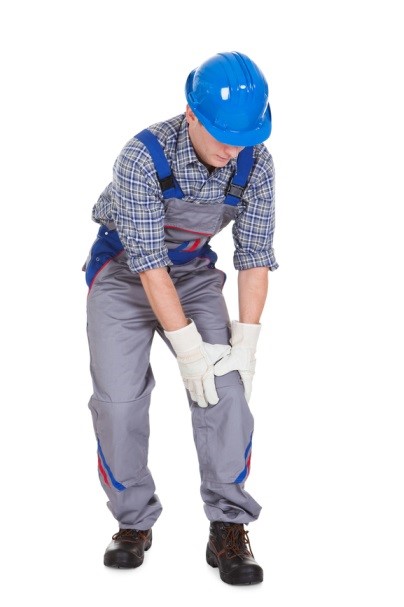The knee is highly susceptible to injury especially when working in industrial settings that are characterized by work completed in outdoor environments. Work in outdoor environments may expose the individual to slippery surface or uneven/unstable surfaces such as rough ground.
Are you aware that when you jump from a high surface to the ground your knee is absorbing 7-12 your own body weight?
To understand why the knee is so susceptible, it is important to know that it is made up of a number of structures and their functions including:
-
- Tendons – attach the leg muscles to the bones
- Ligaments – join the knee bones providing stability for the knee,
- Numerous bursae which act to help the knee move smoothly,
- Menisci which act as shock absorbers, and
- A series of bones that make up the knee joint (femur, tibia, fibia and patella).


Factors that can contribute to acute or gradual injury over time to the knee include: awkward postures (kneeling, locking the knees, crouching, twisting), high force (jumping from one surface to another or side impact), contact stress (kneeling on a hard surface) and repetitive motion (such as going up and down stairs).
To minimize risk of injury remember the following:
-
- Be aware of footing when walking on slippery or uneven surfaces.
- Avoid jumping off equipment or higher surfaces. When dismounting or mounting equipment always try to maintain a three point contact.
- Use knee pads or a kneeling pad to cushion the knee and prevent heat loss especially when working on concrete in a cold environment.
- Don’t forget to wash your knee pads if they are coming into direct contact with the skin since a dirty knee pad can infect hair follicles which can contribute to bursitis.
- If kneeling for extended periods of time where space is restricted fully extend the leg periodically to help with circulation.
- If a small stool is available consider using a stool rather than kneeling for extended periods of time.
- Whenever possible try to avoid going past 90 degrees with the knee; this will protect the ligaments of the knee as shown below.


